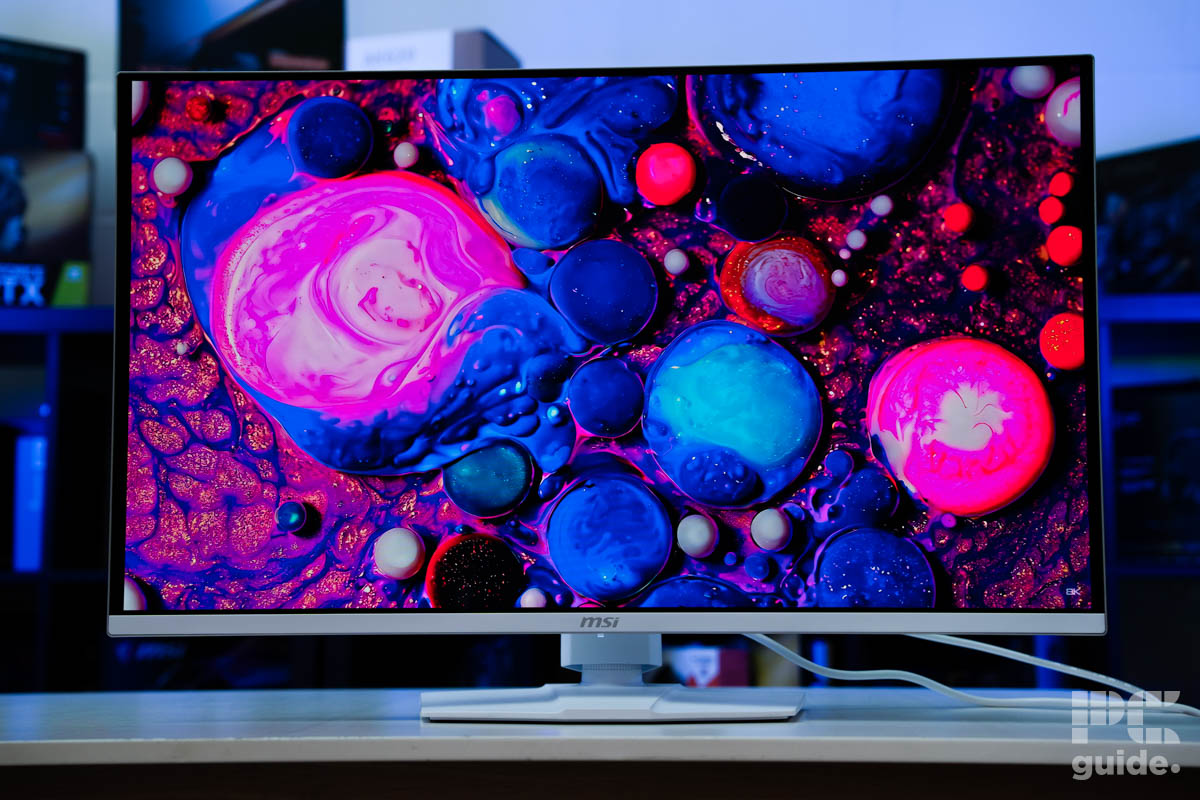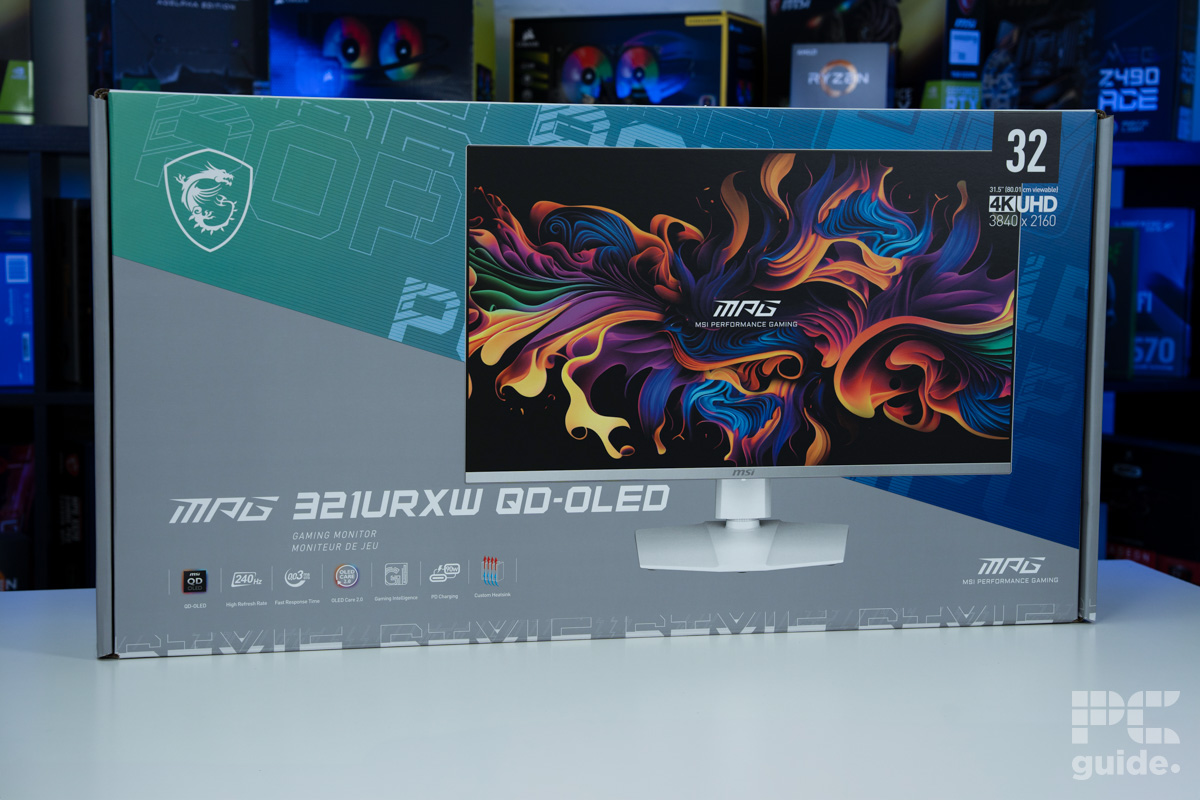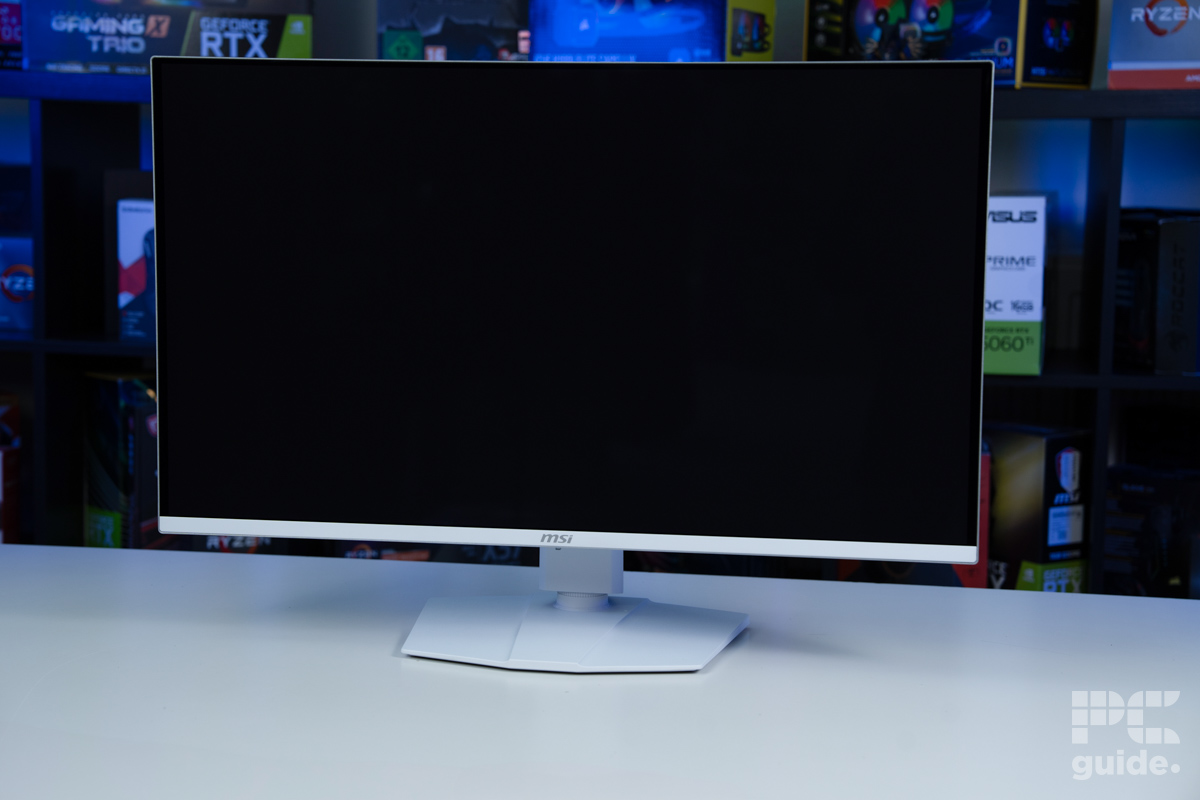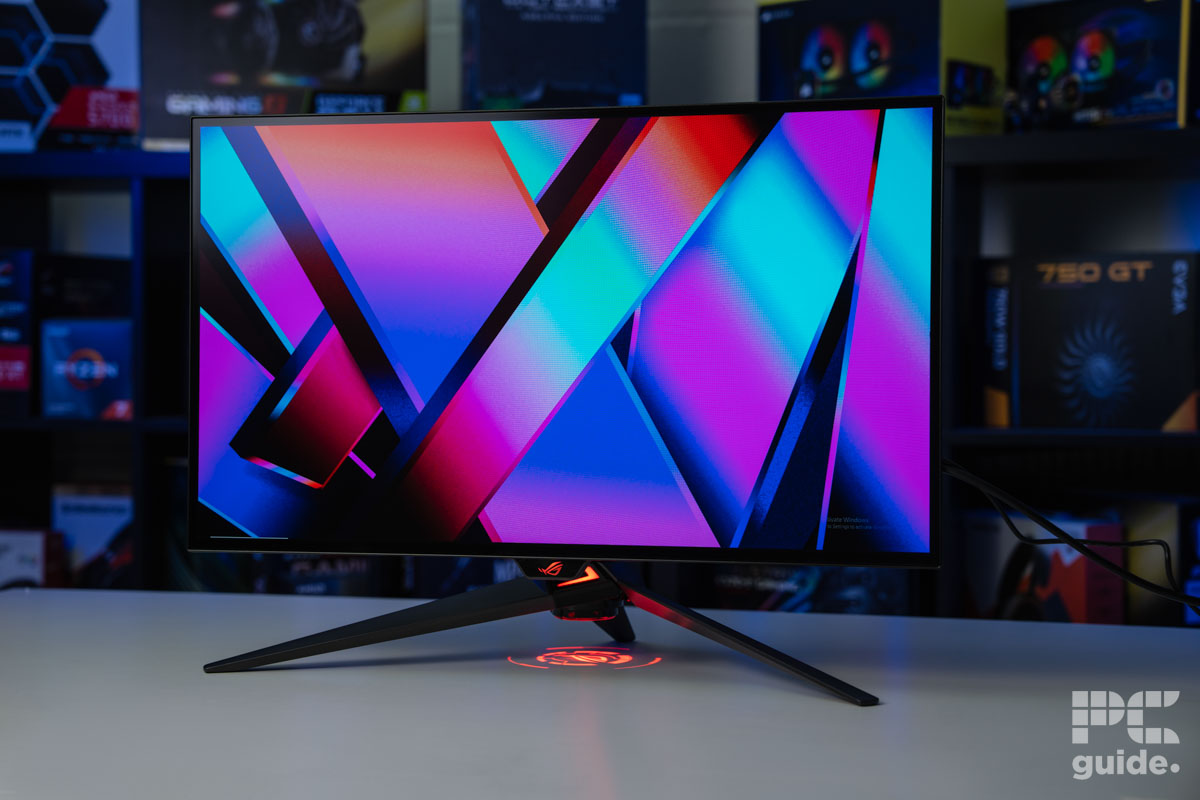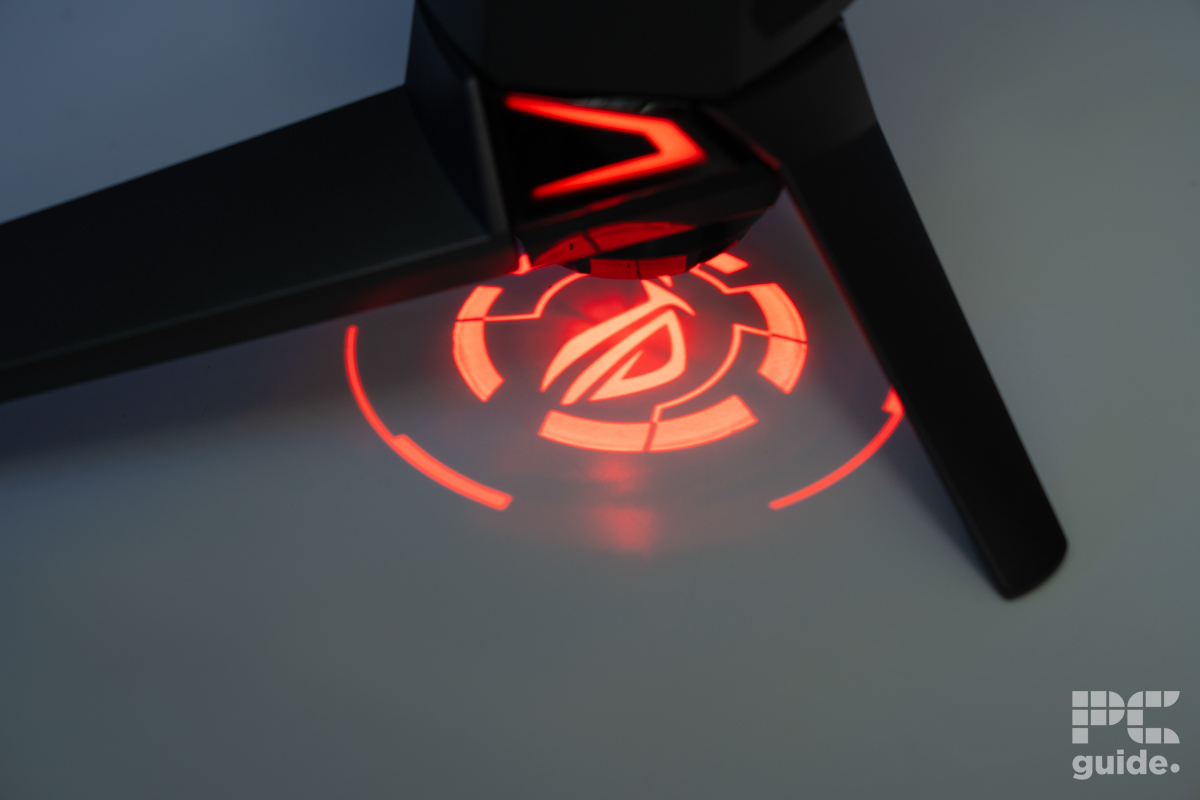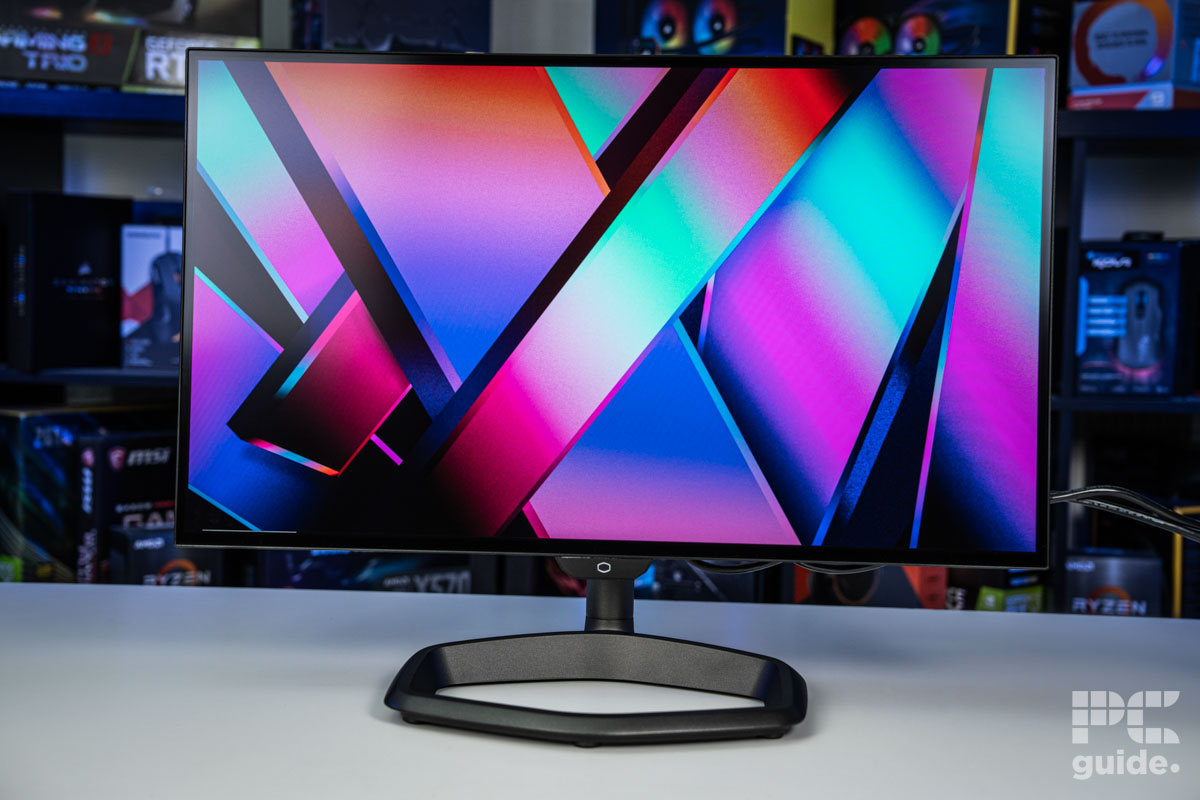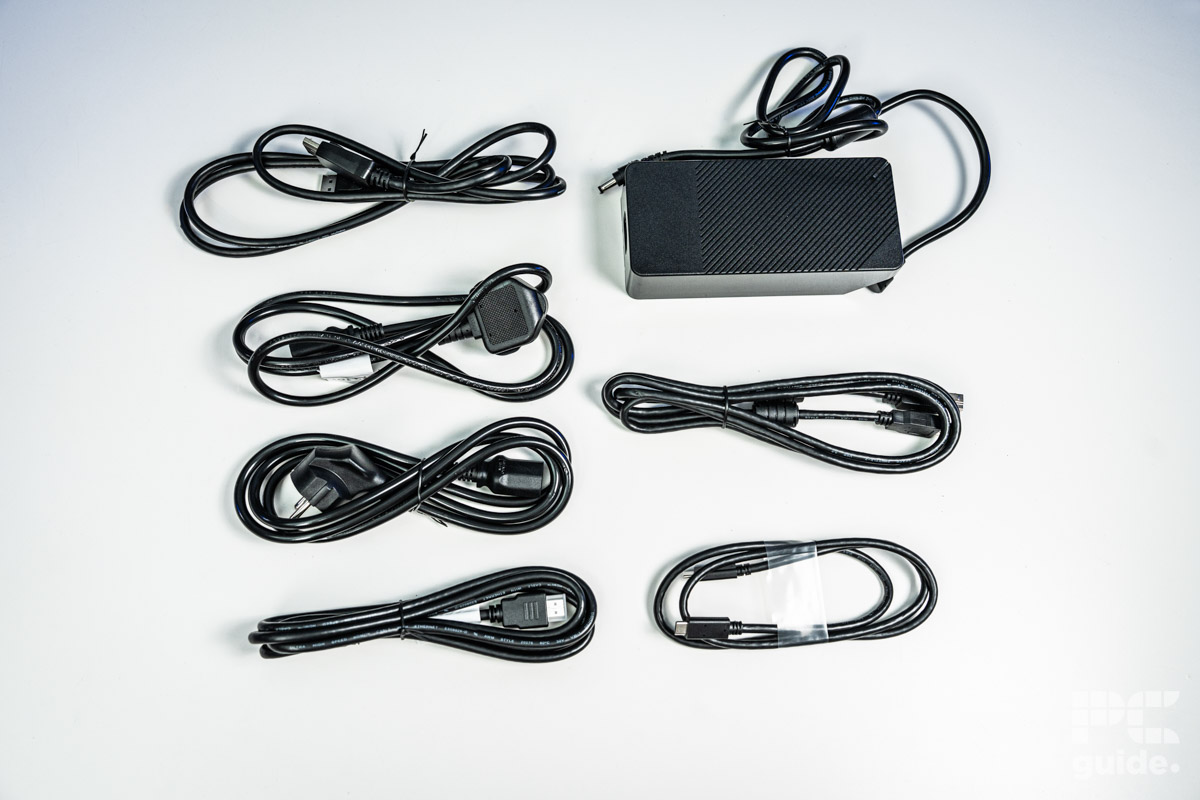Best OLED monitor 2025: the top gaming and creator picks
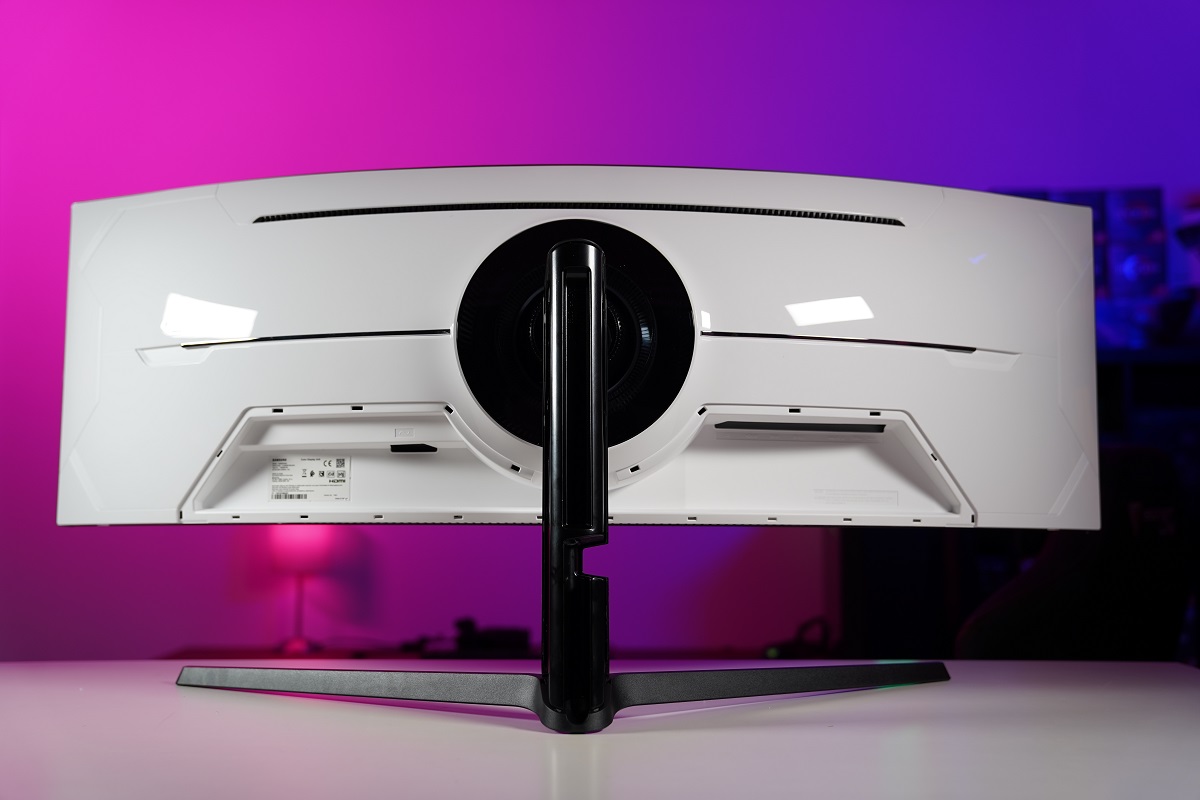
Table of Contents
OLED monitors are some of the finest displays money can buy in 2025, whether you be after a WOLED or QD-OLED screen. Once solely a premium product limited to certain types of display, the technology has now developed to the point where you can now choose from a range of different models, covering a host of different price points, sizes, resolutions, and refresh rates. In this guide, we'll be listing the best of these, helping you find the right model for your specific needs and talking you through the pros and cons of each – you're guaranteed to find something you like!
If you're looking for a wider range of monitor recommendations based on all types of screen tech, then head over to our best gaming monitor or best 4K gaming monitor guides. Alternatively, check out our best Mini LED monitor page for those based on the main competing panel type.
Prime Day is finally here! Find all the biggest tech and PC deals below.
- Sapphire 11348-03-20G Pulse AMD Radeon™ RX 9070 XT Was $779 Now $739
- AMD Ryzen 7 7800X3D 8-Core, 16-Thread Desktop Processor Was $449 Now $341
- ASUS RTX™ 5060 OC Edition Graphics Card Was $379 Now $339
- LG 77-Inch Class OLED evo AI 4K C5 Series Smart TV Was $3,696 Now $2,796
- Intel® Core™ i7-14700K New Gaming Desktop Was $320.99 Now $274
- Lexar 2TB NM1090 w/HeatSink SSD PCIe Gen5x4 NVMe M.2 Was $281.97 Now $214.98
- Apple Watch Series 10 GPS + Cellular 42mm case Smartwatch Was $499.99 Now $379.99
- ASUS ROG Strix G16 (2025) 16" FHD, RTX 5060 gaming laptop Was $1,499.99 Now $1,274.99
- Apple iPad mini (A17 Pro): Apple Intelligence Was $499.99 Now $379.99
*Prices and savings subject to change. Click through to get the current prices.
Products at a glance
-
Best OLED monitor for gaming
MSI MPG 32″ QD-OLED 4K Gaming Monitor (321URX)
- Panel type: QD-OLED
- Resolution: 3840 x 2160
- Refresh rate: 240Hz
- Response time: 0.03ms
- Panel size: 32″
- I/O ports: 2x HDMI 2.1, 1x DisplayPort 1.4, 1x USB-C (DP & 90W Power Delivery), 2x USB-A 2.0, 1x USB-B 2.0 upstream, 1x 3.5mm headphone jack
-
Best 27-inch
ASUS ROG Swift OLED PG27AQDM
- Refresh rate: 240Hz
- Response time: 0.8ms
- Screen Size: 27″
- Resolution: 2560 x 1440
-
Best value Ultrawide
Alienware AW3423DWF Curved QD-OLED Gaming Monitor (34″)
- Panel type: QD-OLED
- Resolution: 3440 x 1440
- Refresh rate: 165Hz
- Panel size: 34.18″
- Response Time: 0.1ms
-
Best Super Ultrawide
SAMSUNG 49 Odyssey OLED G9 Ultrawide Gaming Monitor
- Panel type: QD-OLED
- Resolution: 5120 x 1440 (32:9)
- Refresh rate: 240Hz
- Panel size: 49-inches
- Response Time: 0.03ms
-
An alternative Ultrawide
ASUS ROG Swift 34” OLED Ultrawide 800R Curved Gaming Monitor (PG34WCDM)
- Panel type : QD-OLED panel
- Resolution: 3440 x 1440
- Refresh rate: 240Hz
- Response time: 0.03ms
- Panel size: 34″
-
Best budget
Cooler Master GZ2711 OLED monitor
- Refresh rate: 240Hz
- Response time: 0.03ms
- Screen Size: 26.5″
- Resolution : 2560 x 1440
- Panel type: WOLED (LG.Display LM270AHQ-ERG2)
- I/O ports: 2x DP 1.4, 2x HDMI 2.1, 1x USB-C (DP & 96W PD), 2x USB-A 3.2 Gen 1, 1x USB-B 3.2 upstream, 1x 3.5 mm audio output
How do we pick the best OLED monitors?
Our selection process for the best OLED monitors is based on a combination of technical specifications, user reviews, and real-world performance tests. Ultimately, we try to review and benchmark every selection we pick. On the rare occasions this is not possible, we will always use trusted alternative sources for this data.
We examine factors like resolution, refresh rate, the monitor's ergonomic design, input connectivity, user interface, and additional features like HDR support or adaptive sync technologies (e.g,. Nvidia G-Sync or AMD FreeSync). Using DisplaCAL software and the X-rite i1Display Pro calibration device, we conduct tests for color accuracy, color gamut, brightness, contrast ratio, white and black point, and gamma, plus test for panel uniformity to ensure how well each monitor is suited for recreational and/or professional purposes, depending on the target audience.
Best OLED monitors: Our top picks

- Panel type: QD-OLED
- Resolution: 3840 x 2160
- Refresh rate: 240Hz
- Response time: 0.03ms
- Panel size: 32″
- I/O ports: 2x HDMI 2.1, 1x DisplayPort 1.4, 1x USB-C (DP & 90W Power Delivery), 2x USB-A 2.0, 1x USB-B 2.0 upstream, 1x 3.5mm headphone jack
- 4K resolution at 32” gives high pixel density
- 240Hz with excellent response time
- 99% DCI-P3 coverage & high color accuracy
- USB hub & KVM switch
- Good value for money
- Not very bright
- Utilitarian appearance
At the top of the shop for our best OLED monitor for gaming is the 32-inch, 4K resolution MSI MPG 321URX. This monitor offers a great deal for a reasonable price (by OLED standards) – with great performance in almost every area and a whole host of features, including a USB hub, 90W USB-C power delivery, and a KVM switch that make it useful for general productivity or creative use as well as gaming.
The 240Hz max refresh rate (not the highest you can get at 4K but certainly up there) and near instantaneous response time ensure fluid, blur-free gameplay. It comes with an HDMI 2.1 port, making it fully compatible with the latest consoles like the PS5 and Xbox Series X|S. Colors are rich and vibrant, HDR content pops with intensity, and handles text better than many OLEDs (in part thanks to its high pixel density), making it suitable for productivity tasks alongside gaming and media use.
The max SDR brightness of around 245 nits screen isn't bad by OLED standards, but when combined with the glossy screen, it won't be to everyone's tastes if they have to work in a bright environment and worry about screen glare. It's also not the nicest-looking monitor around, being a bit grey and utilitarian in its appearance. Still, for an asking price of around the $900 mark, it is an excellent buy indeed.

- Refresh rate: 240Hz
- Response time: 0.8ms
- Screen Size: 27″
- Resolution: 2560 x 1440
- 240Hz refresh rate
- OLED panel has fantastic contrast ratio
- Excellent response time & motion clarity
- 100% sRGB coverage & high color accuracy
- Great HDR performance
- Peak SDR brightness low as with other WOLEDs
- Text clarity could be better
- Only comes with basic FreeSync
- Lacks HDMI 2.1
- Not the cheapest
When we tested this monitor for our ROG Swift PG27AQDM review, it delivered impressive results, making it an excellent option for gamers and creatives alike. For starters, this gaming monitor has a 240Hz refresh rate and a 0.03ms response time, which means you shouldn’t experience any delay in the time you perform the action to it being displayed on the monitor.
It has a 2560 x 1440p resolution, which is 2K or QHD, and on a 27″ OLED panel, the pixel density should provide crisp visuals. A neat design element of this monitor is that when you turn it on, the ROG logo is painted on your desk, which adds to the overall gamer-like aesthetics. The anti-glare matte coating is also a great addition as it means you can comfortably use this monitor for gaming or work in brightly lit areas or across the window in daytime without experiencing any glare. As with all OLED monitors, they need to be maintained to avoid burn-in, and this monitor has the standard suite for OLED care, which includes pixel refresh and more.
Some downsides to this monitor are that it doesn’t come with Premium FreeSync and lacks a USB-C port, with the 2 HDMI ports limited to HDMI 2.0. While that doesn’t make it a deal breaker, there are better connectivity options available on other monitors, but even these should work perfectly fine with various peripherals.
When we tested this monitor, we got 99.7% gamut coverage and 94.2% and 87.2% DCI-P3 and Adobe RGB coverage, respectively. The color accuracy, contrast, gamma, and brightness tests were also great. The average deltaE*00 score we got was 1.24 in the sRGB mode, with the second-best score coming in the Racing mode with 2.76 points. What this means is that in the sRGB mode, professional color grading work can be done as the lowest standard for color accuracy is 2.5, and 1.24 is well below that. The panel uniformity was also excellent, meaning it can easily be used by creatives as well as gamers.
The maximum SDR brightness was recorded at 260cd/m2, which isn’t the brightest, but compared to the general brightness level of OLED montors it is pretty good. The lowest brightness achieved was 23.54cd/m2 at 0%, and to achieve the brightness of natural light, which is 120cd/m², we had to turn it up to 39%, which is pretty decent. In the HDR mode, the maximum brightness recorded with a 10% window size was 921cd/m2, which is pretty great for an OLED monitor.
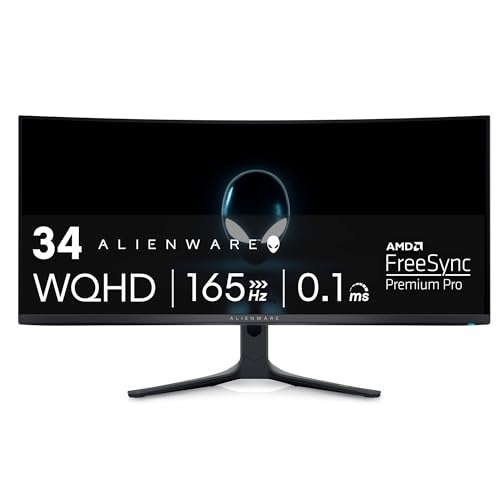
- Panel type: QD-OLED
- Resolution: 3440 x 1440
- Refresh rate: 165Hz
- Panel size: 34.18″
- Response Time: 0.1ms
- Immersive ultrawide screen
- Excellent response time
- 99% sRGB coverage & high color accuracy
- Good value for money
- Looks great
- Lower pixel density impacts text legibility
- Not very bright
- 165Hz refresh rate might turn-off competitive gamers
Alienware isn't a brand readily associated with value for money, but the AW3423DWF is a great ultrawide OLED monitor available at a surprisingly reasonable price, particularly if you can pick one up on sale. As with virtually all Alienware products, though, it still looks fantastic.
This 34-inch curved screen has 1800R of curvature, giving great immersion. At 3440 x 1440 native resolution, the pixel density isn't as great as on 4K models, meaning text legibility isn't the best, but for gaming and multimedia viewing, it's perfectly fine, and it's easier to run games for a respectable FPS at this resolution anyway. Similarly, the maximum refresh rate caps out at 165Hz, which might not be enough for some true competitive gamers, but for the average user is absolutely fine. The response time is as great as you'd expect in an OLED monitor.
Compared to the similar AW3423DW with a matte screen, the AW3423DWF comes with a glossy finish, which is of greater attraction to the average user as it enhances the pop of the colors and the already impressive contrast, though obviously it makes it less suitable for working in brightly lit environments.
The SDR peak brightness caps out at around 240 nits, which again isn't the brightest by general monitor standards, but is almost the same as our top pick, and standard fair for an OLED screen. The ABL (Automatic Brightness Limiter) thankfully isn't as oppressive as on some OLED screens, meaning you won't see as big a fluctuation in the brightness once you've set it to the maximum.
Overall, this is a decent gaming monitor, and for gaming, you shouldn’t have any complaints. The only downside is the pixel density and even then, my personal experience, is that you get used to it but it is better to opt for another monitor with better clarity as straining the eyes is never a good idea.
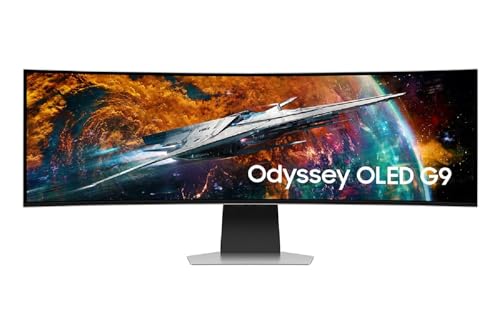
- Panel type: QD-OLED
- Resolution: 5120 x 1440 (32:9)
- Refresh rate: 240Hz
- Panel size: 49-inches
- Response Time: 0.03ms
- Massive screen real estate
- Extremely immersive
- 240Hz refresh rate & excellent response time
- 100% sRGB / 98% DCI-P3 coverage & high color accuracy
- Expensive
- Lower pixel density impacts text legibility
- Not very bright
- Takes up a lot of desk space
The Samsung Odyssey OLED G9 G93SC is a true showstopper in the world of ultrawide gaming monitors. Stretching an enormous 49 inches across with a cinematic 32:9 aspect ratio and 5120×1440 resolution, it offers an incredibly immersive viewing experience that feels like you're looking at two 27-inch 1440p displays fused into one. Of course, not everyone has the desk space for such a behemoth, nor the money to meet the asking price, but if you do, it's pretty amazing.
Impressively for such a massive screen, you get a very nice 240Hz refresh rate, along with the usual fantastic response time. SDR brightness is once again around the 250 nits typical of a QD-OLED panel – not great, but fairly standard. ABL is better than what you see in a lot of models, however, leading to much less aggressive brightness fluctuations.
It comes with a glossy screen coating, which makes the colors and contrast on this bad boy really pop. Color accuracy is solid, and you get a very nice 99% DCI-P3 coverage along with 100% sRGB gamut, making it good for color-based work as well as gaming.
Given the G9 is so big, the pixel density does suffer a bit, so it's not the best for reading text on; however, it's far from terrible in this regard – merely average by OLED standards.

- Panel type : QD-OLED panel
- Resolution: 3440 x 1440
- Refresh rate: 240Hz
- Response time: 0.03ms
- Panel size: 34″
- 240Hz refresh rate & excellent response time
- 100% sRGB / 99% DCI-P3 coverage & high color accuracy
- Excellent HDR brightness
- Better text legibility than most OLEDs
- Superior reflection handling
- Expensive
- Not very bright in 100% SDR mode
If you're looking for a more premium 34-inch ultrawide than the Alienware model above, then the ROG Swift OLED PG34WCDM could be the pick for you, if you can afford it, as the asking price is quite a bit higher.
In contrast to the Alienware, though, it has a higher 240Hz refresh rate and comes with a matte coating, rather than a glossy one, which means better reflection handling for use in brighter environments, although it does mean reduced vibrancy on the colors and slightly inferior image clarity in general. Various features on this screen also help to reduce text fringing and other artifacting to a greater extent than normal, meaning text legibility is pretty good.
Still, the Swift OLED PG34WCDM does have terrifically bright HDR peak brightness, reaching up to 1300 nits on a 3% size window, which means the contrast really pops when HDR mode is enabled. The SDR brightness is your more standard QD-OLED fair at around the 250 nits mark.
The 0.03 ms response time is also excellent if you’re a competitive gamer. The responsiveness should be seamless, and every movement you make should be displayed quickly on the panel, giving you a competitive advantage. The dedicated heatsink should also help keep it cool, and the ASUS OLED care should prevent burn-in, provide pixel cleaning reminders, and ensure the panel remains in great shape.
- Refresh rate: 240Hz
- Response time: 0.03ms
- Screen Size: 26.5″
- Resolution : 2560 x 1440
- Panel type: WOLED (LG.Display LM270AHQ-ERG2)
- I/O ports: 2x DP 1.4, 2x HDMI 2.1, 1x USB-C (DP & 96W PD), 2x USB-A 3.2 Gen 1, 1x USB-B 3.2 upstream, 1x 3.5 mm audio output
- 240Hz refresh rate
- Excellent response time & motion clarity
- Sturdy stand
- Matte coating reduces glare
- 96W USB-C Power Delivery & KVM switch
- A good array of ports
- Inferior HDR
- Peak SDR brightness low as with other WOLEDs
- Color accuracy sub-par
- Seemingly no OLED burn-in cover in warranty
- Unintuitive controls
- Text legibility could be better
- Not the cheapest
OLED monitors can be quite expensive, but if you’re in the market with a strict spending limit, we recommend you check out the Cooler Master GZ1711 OLED monitor. This is a 27″ monitor and it had decent performance when we tested it for our GZ2711 review.
To begin with, this gaming monitor has a 2560 x 1440p resolution and a 0.03ms response time, which is fairly good. The panel (WOLED) has a good matte coating, which helps reduce the glare, making it usable in a brightly lit room, but the compromise is a bit of muddy colors, meaning not the best for creative work.
An important factor for OLED monitors is the OLED care functionality. This feature includes maintenance aspects such as pixel cleaning, which rapidly turns the LEDs on and off to remove any additional charge, and more. However, including pixel cleaning, it has screen shifting, which isn’t adjustable. Besides that, the brightness is limited in SDR, and the Automatic Brightness Limiter can’t be turned off, which is a concerning design decision. However, it does come with a built-in KVM switch, meaning you can connect various devices with it and switch seamlessly between them.
A fast gaming monitor with the terriffic response time you’d expect from an OLED display, a sturdy metal base, and a good selection of ports, the Cooler Master Tempest GZ2711 OLED is by no means a bad monitor if you can get one at a cheap price.
PC Guide
A great aspect of this monitor is that it has a 3-year warranty, but there is no mention of OLED burn-in cover, which, once again, is concerning. When we tested this monitor, the result was decent but not the best by any means. The lowest deltaE*00 score was 2.63 for the Standard and Web mode, whereas below 2.5 is what is considered to be good.
The Black and Contrast was perfect, but that was to be expected from an OLED monitor. When it comes to the brightness, the lowest output was recorded at 4.76cd/m² and this is to test how close it is to natural light, which is around 120cd/m². When we turned on HDR, the color was washed out, and by showing 10% of the screen to test it, the brightness was around 664cd/m,2 and the experience wasn’t great.
An area where this monitor shone was when we tested its panel uniformity. Only the bottom layer had a variation between 1 – 3 and the rest has below 1, which is great. Overall, this is a decent OLED monitor, but it lacks a handful of features and the most concerning bit is the lack of OLED burn-in coverage, which makes it a risk to buy even if it is pocket-friendly.
Why you can trust us
Here at PC Guide, we have a long history of testing monitors and TVs, whether they are superwide monitors, IPS displays, or OLED gaming monitors. Besides that, we also cover other hardware such as motherboards, graphics cards, laptops, and more. The process of testing various products, including OLED monitors consists of a hands-on approach, gauging real world performance, in-depth evaluation, and other important aspects such as build quality, response time, panel uniformity, brightness, and more.
Our goal is to test and review every product we recommend, but there are instances where we can’t test and review a certain product, but we update our selection with more reviewed products as soon as we have them in the office. Last but not least, our standards are uncompromising and free from brand loyalty.
We do not have any bias toward any brands and judge the products solely on their performance and showcase the output as it is to the reader, because we believe in complete transparency, and we want the same standard for our readers that we demand for ourselves.
Things to consider when shopping for the best OLED monitor
There are a few factors you need to consider before choosing the best OLED monitor.
Panel type
The panel type plays an important role in the price of the monitor and the overall performance. There are QD-LED panels, that are good for creatives as they offers a wider color gamut, higher brightness, and vibrant visuals. On the other hand, WOLED panels have a consistent brightness and good color accuracy. However, turning on the peak brightness can impact the color accuracy.
Screen size and resolution
There are 1440p and 4K OLED gaming monitors, but depending on the screen size, the pixel density can impact text clarity. For example, 4K has a higher pixel density, so a 32″ 4K monitor will look and feel better; however, if you were to flip the situation and we have a 1440p 32″ monitor, you’d see a considerable difference in visuals, as the latter would have a lower pixel density. Also, it goes without saying, a higher resolution and bigger panel size monitor will set you back by a lot.
OLED care
Ensure that whichever monitor you get, it has good OLED care options, and the warranty covers OLED burn-in. While this issue isn’t as bad as it once was, it can still happen, and it is better to be covered rather than invest a good amount of money without coverage.

Is an OLED monitor the right pick for you?
OLED displays are renowned for their unbeatable contrast ratios and black points as they do not rely upon a backlight and can completely switch off individual pixels, meaning you can enjoy rich dark scenes at excellent levels of detail. They are also excellent for viewing HDR content for the same reason and have fantastic response times across the board, even the cheaper models. All of this makes them fantastic multimedia displays, great for immersive or competitive gaming, and often good for creative work (depending on the individual color accuracy of the display).
That being said, they are generally more expensive than more conventional LED panel monitors, and often struggle to reach the same peak brightness levels, so aren't usually ideal for brightly lit environments. Text legibility is also (sometimes) not as great as on LCD displays, although this is not always the case, thanks to more recent technological innovations.
If you're looking for an office monitor, you should check to make sure your specific model performs well in these areas, or opt for a different panel type. OLED burn-in is now a fairly small risk, but it's still something you need to be aware of.
Is OLED burn-in still a problem?
OLED burn-in was primarily an issue on older OLED panel tech; these days there are various different protective technologies that minimize the risk of this occurring, such as ‘pixel shifting' and ‘intelligent dimming'. As long as you make sure to enable these bits of tech within the settings and don't leave your monitor switched on to the same static image for the majority of the day, you should be alright.
Generally speaking, burn-in is something to be aware of, but not worry about as long as you've taken the necessary precautions.
Is OLED or Mini-LED better for monitors?
Both OLED and Mini-LED monitors have their strengths and weaknesses, so which one you pick really depends on what area you prioritize, as well as on the performance of the specific models themselves.
OLED monitors have superior contrast ratio and black points, meaning they are exceptional at showing darker scenes, including those with very bright highlights (e.g. a starry night sky), and do not suffer from backlight bleed; they do tend to be lacking when it comes to maximum brightness however, so are usually not the best for use in well-lit environments of when outdoors. There is also the aforementioned (slight) risk of burn-in, as discussed. For competitive gaming or watching fast-moving sports, they also have the advantage of excellent response times, meaning ghosting is not an issue.
Mini-LED screens are primarily impressive thanks to their very high peak brightness, which goes well above what an OLED screen is capable of. They can still have solid contrast ratios (though not as good as OLEDs') and have zero risk of burn-in, however, the detail in the blacks is not as good, with darker scenes often having a bit of a ‘glow' to them, plus response times that cannot compete with OLED.


